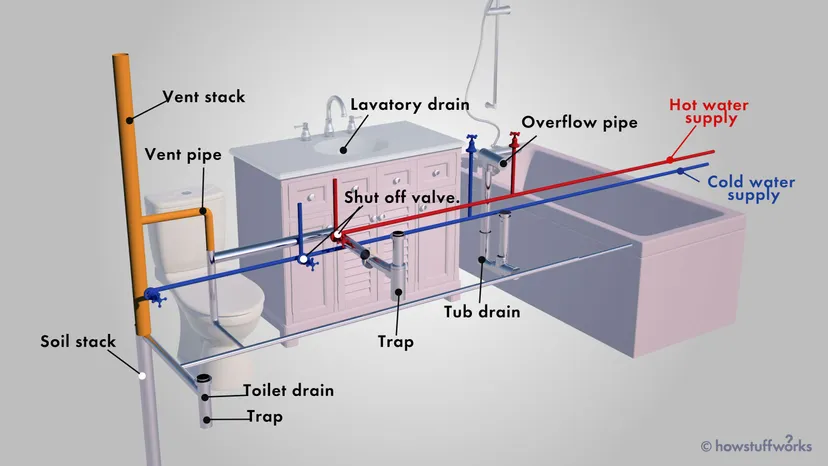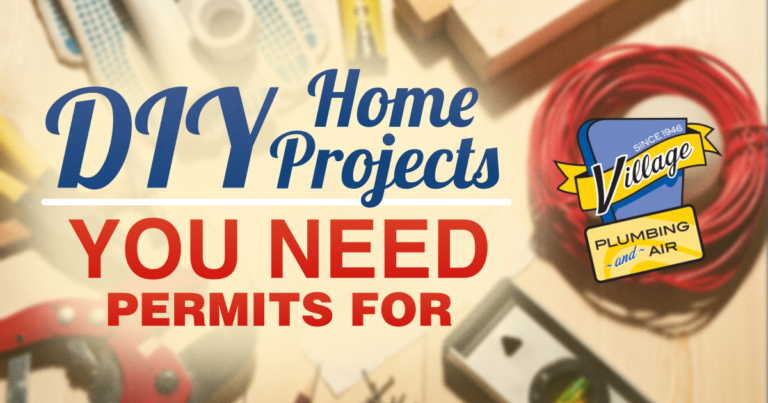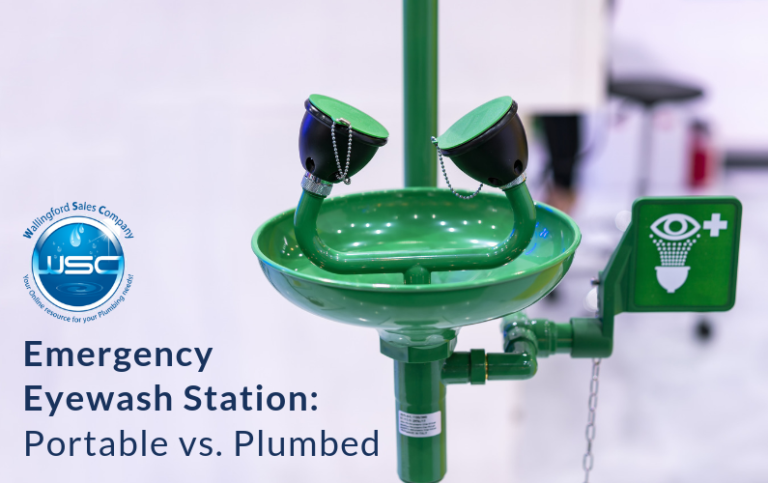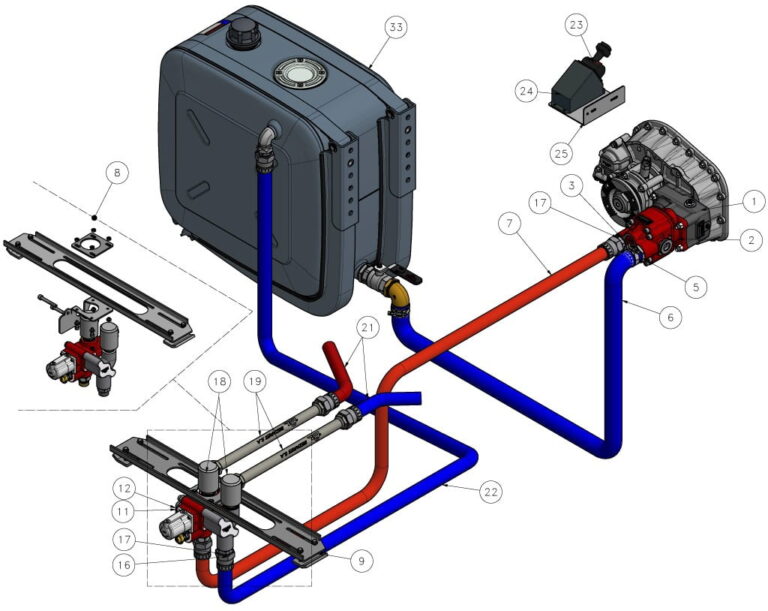What Is Plumbing System Design?
Plumbing system design is the process of designing the plumbing system of a building or structure. This includes the selection of the materials, layout, and specifications of the plumbing systems. It also involves the evaluation of the size and type of pipes, fixtures, and fittings as well as the design of the system for water distribution, drainage, and waste disposal. Plumbing system design is a critical part of any building construction process and requires an in-depth knowledge of plumbing regulations, codes, and materials.
Overview of Plumbing System Design
Plumbing system design is an essential component of any building or home. It is responsible for delivering fresh water, disposing of waste, and managing gas and wastewater systems. Plumbing systems typically consist of pipes, valves, fittings, and fixtures that are arranged in a complex network to ensure efficient delivery and disposal of water. Designing a plumbing system requires understanding of local codes and regulations, as well as the knowledge of how to design a system that meets the needs of the specific building. Proper design is necessary to ensure that the system functions effectively and safely. The goal is to create a system that is efficient, durable, and cost-effective. By understanding the basics of plumbing system design, you can ensure that your building meets the needs of its occupants.
Plumbing System Design Components
A plumbing system is a complex network of components that work together to ensure safe and efficient water distribution throughout your home or business. The main components of a plumbing system include pipes, fittings, valves, fixtures, and other devices. Pipes are used to transport water from the source to different areas of the building, while fittings are used to join the pipes together. Valves are used to regulate the flow of water and to stop the flow if necessary. Fixtures such as sinks, toilets, and showers are used to control the usage of water and direct it to the necessary outlets. All of these components must be carefully designed and installed in order to create a functional plumbing system. With the right design and installation, your plumbing system will provide you with safe and reliable water for many years to come.
Benefits of Plumbing System Design
Having a well-designed plumbing system is essential for a variety of reasons. From saving time and money on costly repairs, to ensuring the safety of your home, proper plumbing design is key. With the right design, you can reduce water usage and save energy, while also improving the overall efficiency and performance of your plumbing system. Not only will a well-designed system save you money, it will also provide a safer environment for your family. Good plumbing design can help prevent potential health hazards from developing, as well as protect your home from water damage. With an efficient plumbing system, you can also reduce noise, conserve water, and ensure your home’s plumbing system is functioning at its best. With the right design, you can enjoy all the benefits of a reliable and efficient plumbing system.
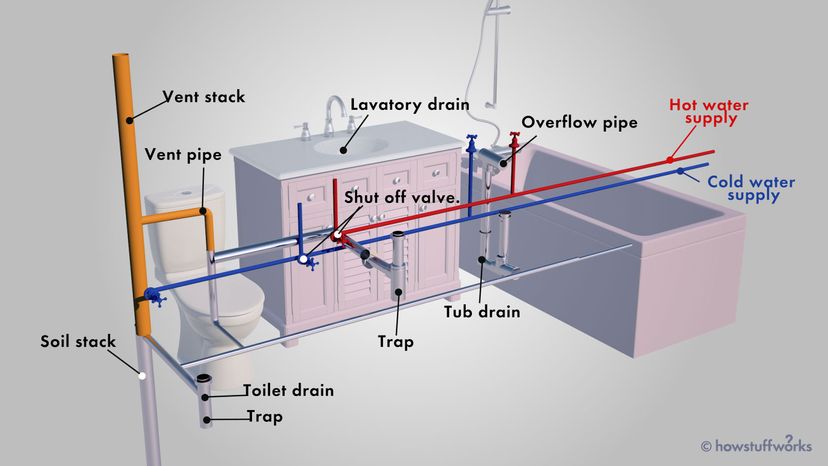
Challenges with Plumbing System Design
The design of plumbing systems is an essential component of any building project, yet also one that can bring unique challenges. Poorly designed plumbing systems can lead to expensive repairs, health risks, and other issues, so it is important to design the system with attention to detail. Challenges that can arise with plumbing system design include selecting the right materials and components, ensuring proper water pressure, taking into account future expansion, and understanding local plumbing codes and regulations. By taking the time to plan the system and consult with a professional, you can ensure that the plumbing system is designed to meet the needs of the building and its inhabitants.
Steps for Designing a Plumbing System
Designing a plumbing system can be a challenging and daunting task. However, with the right tools and knowledge, it can be completed with ease. Here are some steps to help you design a plumbing system that works properly and efficiently:
1. Assess your needs. Consider the number of fixtures, piping materials, and other requirements, before moving onto the design phase.
2. Determine the layout. Sketch out the intended plumbing system layout, taking into account the measurements and requirements you have determined in step one.
3. Select the piping materials. Choose the piping material that best suits your needs, such as copper, galvanized steel, or PVC.
4. Install the pipes. To ensure a proper connection, make sure each pipe is installed according to the manufacturer’s instructions.
5. Install the fixtures. Select the appropriate fixtures for the plumbing system and install them securely.
6. Test the system. Test the system to ensure it is working properly.
With these steps, you can design a plumbing system that works efficiently and effectively. With the right tools, knowledge, and preparation, you can have a plumbing system you can rely on.
Common Mistakes in Plumbing System Design
Plumbing system design is an important part of any building project. Poor design can result in costly repairs, delays, and even safety risks. To prevent these problems, it is important to be aware of common mistakes in plumbing system design. These mistakes include improper sizing of pipes, incorrect piping material, poor drainage design, incorrect water pressure, and inadequate venting. By taking the time to properly size your pipes and choose the right materials, you can ensure your plumbing system will work as intended. Additionally, having a good drainage design and setting the correct water pressure is essential for a properly functioning system. Lastly, proper venting is necessary to prevent air and gas build-up, which can cause a variety of issues. The key to avoiding common mistakes in plumbing system design is to have a thorough understanding of the project requirements and to ensure the system is designed correctly.
FAQs About the What Is Plumbing System Design?
Q: What is plumbing system design?
A: Plumbing system design is the process of designing a set of pipes and fixtures for a building’s plumbing system. The goal of the design is to provide an efficient, safe, and cost-effective plumbing system that meets all building codes and regulations.
Q: What are the components of a plumbing system design?
A: The components of a plumbing system design include pipes, fittings, valves, fixtures, and other components such as pumps, water heaters, and water treatment systems. The design must also consider the location of the plumbing system and its components, and how they will be connected.
Q: What are the main considerations when designing a plumbing system?
A: The main considerations when designing a plumbing system include the size of the pipes, the water pressure, the water flow rate, the type of fixtures, the materials used, and the local building codes and regulations. The design should also consider the location of the plumbing system and any potential risks or hazards.
Conclusion
In conclusion, plumbing system design is an important part of the construction process. It involves the planning, installation, and maintenance of the plumbing systems in a building. Plumbing systems must be carefully designed to ensure they are safe and meet the needs of the building and its occupants. Plumbers must have the right knowledge and experience to design plumbing systems that are both efficient and safe.

